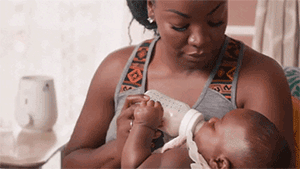
16 Apr Transitioning Baby from Breast to Bottle
Breastfeeding is such an important part of your baby’s growth and development. Yet, no matter how long or how little your child breastfeeds, there will come a time that your baby will need to transition off the breast. This time will be different for every mom and baby and will depend on how old the child is. Often if a child is old enough, such as 10-12 months of age, they may be transitioned from breasts to a sippy cup instead. However, no matter if and when you choose to transition your child to a bottle—there are a few tips to help make this an easy and less overwhelming transition.
- Time Your Transitions- If you are looking to transition to the bottle, you need to pick a time when your baby isn’t super hungry, about an hour after a feeding is a good time. If your baby is hungry and frustrated, it will be more difficult on them.
- Experiment With Different Equipment- The right equipment can be an essential component to helping you with your transition to the bottle. Experiment with different nipples and bottles, including different nipple shapes that work with your baby. Remember, too big of a nipple may cause your baby to gag—while a nipple that is too small can be too difficult for your baby to get liquid. The flow with nipple size also matters.
- Get Help- Sometimes, practicing with bottle feeding from a different source besides mom will help babies with their transition. Ask your partner, family member or another caregiver to try bottle feeding. Your baby won’t be as distracted by the breast and may gain a better understanding of the bottle if someone else is holding the bottle.
- Treat it Like Breastfeeding- If your baby found success with breastfeeding by pausing and restarting, then try the same process with the bottle. Your baby should understand that this is the same feeding process.
- Give Your Baby a Taste First- If your baby doesn’t seem to understand what is going on with bottle feeding, start by giving them a small taste of milk (especially if you are pumping into a bottle). Once they taste the breast milk, they will likely understand what is going on. If you are then transitioning to formula, mix the formula together with some breast milk, until you go straight to formula.
- Maintain Contact- Many babies find comfort with breastfeeding because of the skin and eye-contact and affection that is involved. Make sure you still offer a lot of contact when feeding so your baby feels comfortable and confident.
If you have questions about breastfeeding or the best way to transition from breast to bottle, contact Continuum Pediatrics today. We are here to help with this transition to make sure both mom and baby and healthy and happy. Simply call 817-617-8600 to make an appointment today.

